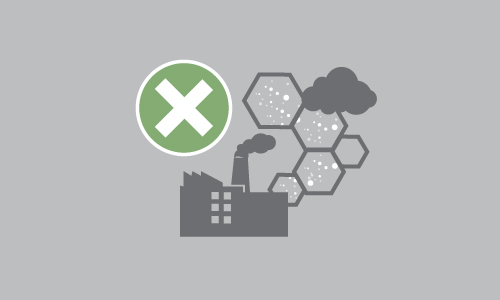The logistics of installing, running, and maintaining pollution control equipment is unique to each manufacturing facility. Production processes, VOC levels, and the size of a plant can dictate what type of equipment must be used to garner optimum results. These variables must be taken into account when selecting a control unit.
However, depending on the facility, ancillary systems may also be required to ensure the unit works efficiently in that specific environment. Turn-key systems with custom ancillary components make it easy for plant personnel to operate the unit efficiently while getting the most of our their pollution control equipment.
Top 3 Add-On Components
Adding components to existing systems must be done in compliance with plant rules and federal regulations. The following ancillary components can transform standard systems into customizable units that work for specific manufacturing plants.
Permanent Total Enclosures (PTE)
The Environmental Protection Agency (EPA) defines a PTE as a “permanently installed enclosure that completely surrounds a source of emissions such that all VOC emissions are captured and contained for discharge to a control device.”
The benefit of using a PTE is ensuring that the capture efficiency (CE) of VOCs is consistently set to 100%. The EPA assumes that devices surrounded by a PTE are capturing all harmful exhaust compounds being passed into the control unit and do not require a CE calculation. However, if a PTE has not been installed, the CE must be determined in order to meet EPA regulations. PTEs can be customized for each control unit, helping manufacturers to reach emission goals with greater efficiency.
Data Acquisition Packages
Monitoring the efficiency of pollution control equipment is a crucial part of lowering and maintaining emission levels. Data acquisition systems can be used to detect ongoing VOC levels and the productivity of the control unit as well as track the plant’s emissions over time. This data can be used to prove compliance with the EPA and meet internal goals set by the manufacturer’s health and safety team.
Furthermore, each manufacturing plant may require data to be collected on different VOCs at varying levels. These differences affect the type and number of alarms set by the unit as well as the amount of data to be collected. Custom data acquisition packages can be installed alongside an emissions control unit and configured for the needs of each facility.
HVAC and Make-Up Air Systems
During the manufacturing process, VOCs and other harmful waste particles are removed from the air and passed through pollution control equipment to be destroyed. While this process helps reduce the release of harmful emissions, the air quality within the plant may be negatively affected. As the contaminated air is removed, fresh air must be replaced to keep the environment safe for workers.
Heating, ventilation, and air conditioning (HVAC) units and make-air systems can be used to replace the lost air with fresh, tempered air. Not only do these systems help improve the quality of the environment inside the plant, but they help control units remove exhaust with greater efficiently. This is due to the vacuum that occurs when air is removed from tightly ventilated spaces and not replaced at the same time, making it harder for the vents to pull air from the space. In addition, air conditioners can be installed to help lower the temperature within a facility, improving the working conditions and efficiency of the equipment.
Depending on the type of control unit required and the climate surrounding the facility, these add-on components may be a crucial accessory.




